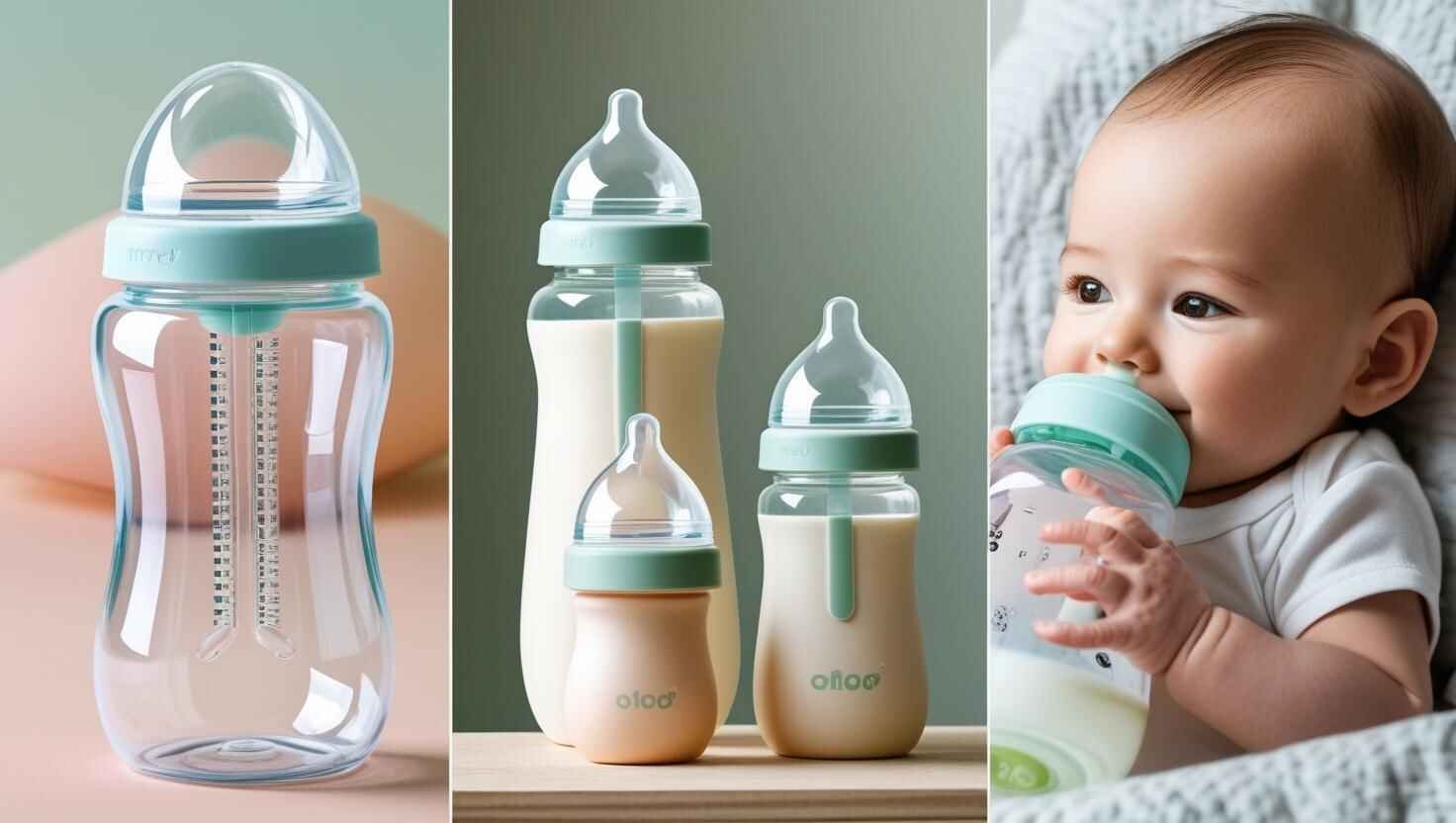If your baby is crying non-stop—even after being fed, burped, changed, and cuddled—it could be more than just a rough day. One possible culprit: colic.
While colic isn’t always fully understood, it’s often linked to feeding discomfort caused by gas, reflux, food sensitivities, or even sensory overload. According to Leigh Anne O’Connor, a lactation consultant with over 20 years of experience, colic is often a blanket term covering multiple issues. “Is it really colic, or could it be reflux? Maybe a milk allergy or even overfeeding?” she suggests asking.
Regardless of the cause, it’s tough on both baby and parents. Thankfully, one simple switch can make a big difference: anti-colic baby bottles.
Best 5 Anti-colic Bottles for Feeding
| Anti-colic Bottle | Best Feature | Anti-Colic Mechanism | Why It Works for Upright Feeding | Price Range |
|---|---|---|---|---|
| Philips Avent Anti-Colic with AirFree Vent | AirFree vent keeps nipple full of milk | Reduces air in nipple even when held upright | Designed to work in a vertical feeding position | $6–$9 |
| Evenflo Feeding Balance + Bottle | Angled design with slow-flow nipple | Integrated venting system reduces air ingestion | Angled bottle naturally supports upright posture | $5–$7 |
| Dr. Brown’s Options+ Wide-Neck Bottle | Internal vent system, wide nipple base | Removes air from milk before baby swallows | Wide neck makes upright feeding easier to manage | $7–$9 |
| MAM Easy Start Anti-Colic | Self-sterilizing & soft nipple | Base venting minimizes swallowed air | Nipple designed to stay full even at upright angles | $6–$10 |
| Tommee Tippee Closer to Nature Anti-Colic | Heat-sensing vent tube | Built-in tube reduces gas and reflux | Short, wide shape supports upright bottle hold | $6–$8 |
🌬️ How Anti-Colic Bottles Can Help
If your little one swallows too much air while feeding, it can lead to gas and stomach pressure—making them feel full without getting enough nourishment. Pediatrician and lactation consultant Dr. Neela Sethi Young explains, “When a baby’s tummy is filled with milk and air, it can cause discomfort. Until they burp or pass that gas, they may cry or fuss.”
Anti-colic bottles are designed to limit how much air your baby swallows. Some do this with vent systems, others use specially shaped nipples, and many combine both to offer better flow and reduce air bubbles.
🔍 How We Found the Best Anti-Colic Bottles
To help you find relief—for both you and your baby—we carefully selected the top-performing anti-colic bottles on the market. Here’s how we made our picks:
-
Real Testing: Parents, editors, and product testers cleaned, assembled, and fed their babies using a range of anti-colic bottles.
-
Expert Input: We spoke to pediatricians and lactation consultants to understand what features truly help with gas, reflux, and colic.
-
Parent Feedback: Over 650 moms and dads shared their real-world experiences with different bottle brands.
-
Deep Research: We analyzed materials (glass, plastic, silicone), nipple styles, vent designs, ease of cleaning, and overall value.
❓ Do You Need Anti-Colic Bottles?
While not every baby needs one, anti-colic bottles can be a game-changer for little ones with gassy tummies, feeding discomfort, or colic-like symptoms.
According to Dr. Young, if your baby has had a couple of rough nights with fussiness after feedings, it’s worth trying one. Even better? 71% of surveyed parents use anti-colic bottles proactively—before symptoms even start.
🕓 When to Stop Using Anti-Colic Bottles
Most babies outgrow colic around the three-month mark, but there’s no rush to stop using these bottles. If your baby is eating comfortably, burping well, and showing no signs of tummy trouble, it may be time to transition.
Still, some babies benefit from the continued use of vented bottles, especially if they’re sensitive feeders. Watch your baby’s cues and adjust as needed. If they’re gulping milk too fast, consider switching to a faster-flow nipple rather than a whole new bottle system.
🔑 What to Look For in an Anti-Colic Bottle
Not all anti-colic bottles are built the same. When choosing the right one for your baby, here are four must-have features to consider:
✅ 1. Vent or Valve System
Reduces air bubbles and helps prevent trapped gas and reflux. Look for bottles with built-in vent tubes or anti-colic valves inside the nipple.
✅ 2. Slow-Flow Nipple
A gentle, steady flow can prevent gulping and reduce spit-up. Many parents love bottles with multiple flow rates so they can adjust as baby grows.
✅ 3. Nipple Shape
From bulbous to tapered designs, the right shape improves latch and comfort. Babies with high palates may prefer rounder nipples for a better seal.
✅ 4. Easy-to-Clean Design
Since anti-colic bottles often have extra parts, opt for dishwasher-safe options with wide openings or simple assembly. Nearly half of surveyed parents rated easy cleaning as a top priority.
🧩 Other Helpful Features
Beyond the essentials, consider:
-
Material: BPA-free plastic, soft silicone, or glass
-
Size options: Some babies feed better with smaller or angled bottles
-
Compatibility: If you use a breast pump or warmer, check that the bottle fits your gear
🛍️ Our Favorite Anti-Colic Bottles (Real Mom Reviews)
Check out our full blog post below to see a side-by-side comparison of the best anti-colic bottles based on real testing and parent reviews:
👉 Read: Best Anti-Colic Bottles Reviewed – Real Moms Share What Worked
💡 Final Tip
Feeding discomfort can be stressful—but finding the right bottle doesn’t have to be. Start by trying one or two bottles from different brands, observe how your baby responds, and go from there. With a little trial and error, you’ll find the perfect fit to keep feeding time peaceful and happy.

